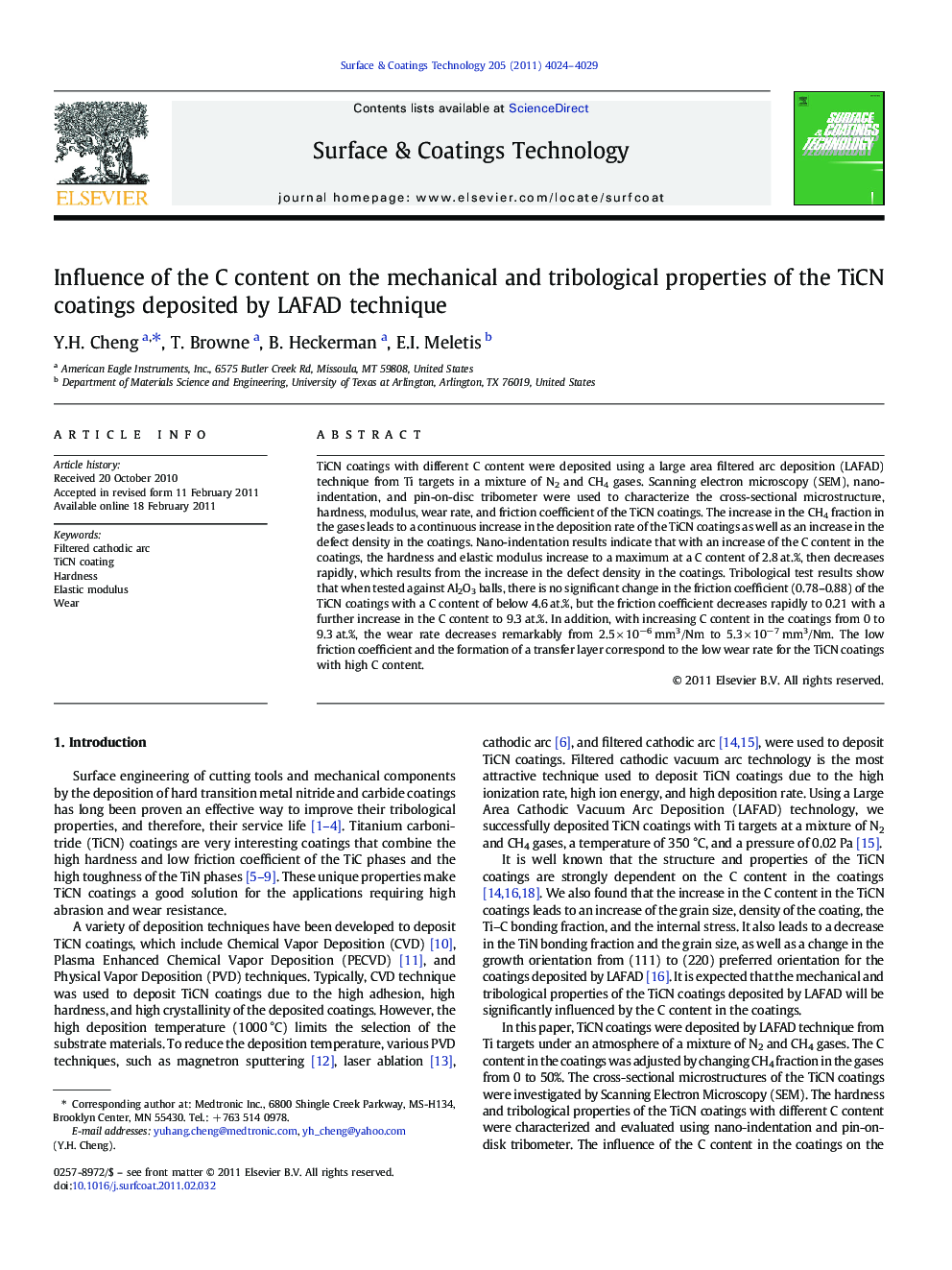| Article ID | Journal | Published Year | Pages | File Type |
|---|---|---|---|---|
| 1659190 | Surface and Coatings Technology | 2011 | 6 Pages |
TiCN coatings with different C content were deposited using a large area filtered arc deposition (LAFAD) technique from Ti targets in a mixture of N2 and CH4 gases. Scanning electron microscopy (SEM), nano-indentation, and pin-on-disc tribometer were used to characterize the cross-sectional microstructure, hardness, modulus, wear rate, and friction coefficient of the TiCN coatings. The increase in the CH4 fraction in the gases leads to a continuous increase in the deposition rate of the TiCN coatings as well as an increase in the defect density in the coatings. Nano-indentation results indicate that with an increase of the C content in the coatings, the hardness and elastic modulus increase to a maximum at a C content of 2.8 at.%, then decreases rapidly, which results from the increase in the defect density in the coatings. Tribological test results show that when tested against Al2O3 balls, there is no significant change in the friction coefficient (0.78–0.88) of the TiCN coatings with a C content of below 4.6 at.%, but the friction coefficient decreases rapidly to 0.21 with a further increase in the C content to 9.3 at.%. In addition, with increasing C content in the coatings from 0 to 9.3 at.%, the wear rate decreases remarkably from 2.5 × 10−6 mm3/Nm to 5.3 × 10−7 mm3/Nm. The low friction coefficient and the formation of a transfer layer correspond to the low wear rate for the TiCN coatings with high C content.
Research highlights►TiCN coatings were synthesized by a novel LAFAD technique. ►Disk-shaped defects exist in the coatings with high C content. ►Defects in the coatings reduce the hardness in the coatings with high C. ►Coatings with high C content exhibit ultra low friction coefficient and wear rate.
